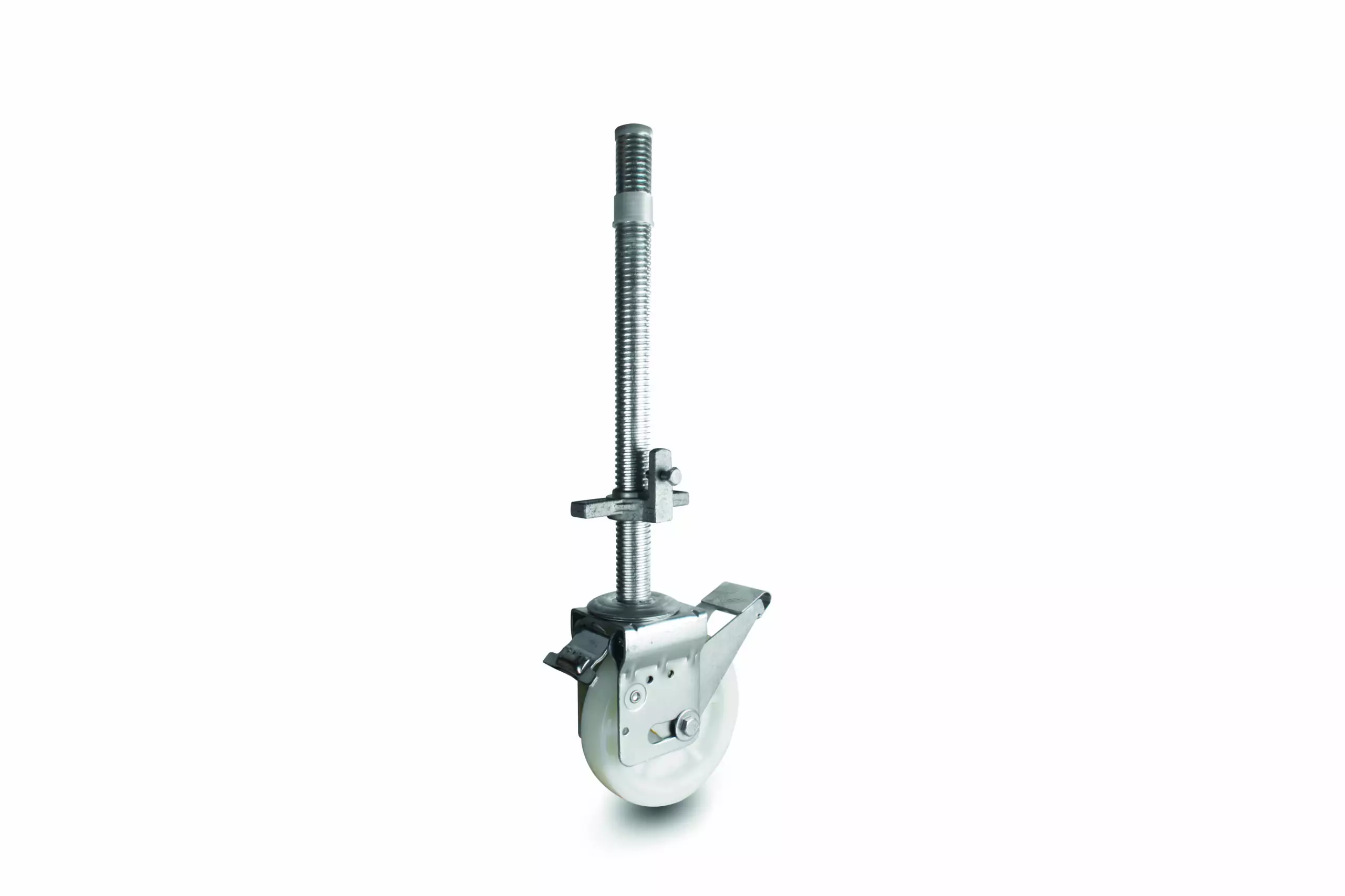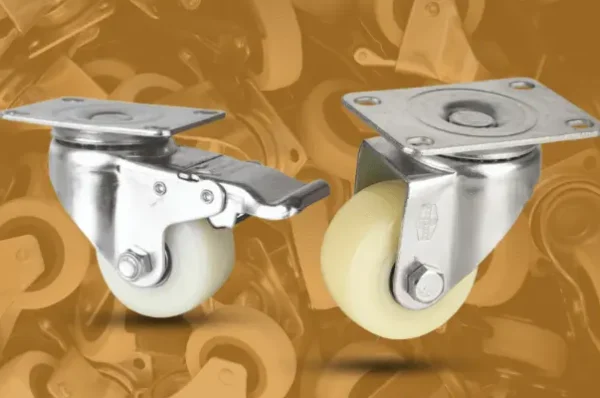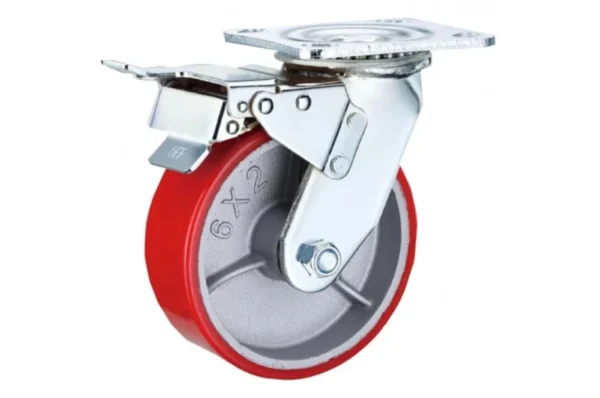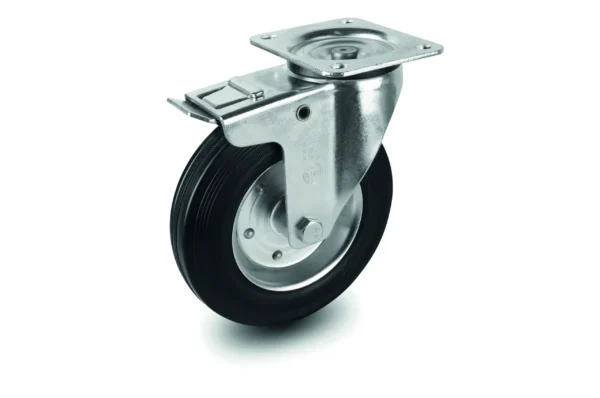Mobility, flexibility, and functionality—three elements that define the modern workspace and home environment. Whether it’s an office chair, a movable cabinet, or a display stand, casters for furniture make movement effortless while preserving stability and floor quality. The right selection can enhance usability, extend furniture life, and even improve workplace ergonomics. Choosing wisely, however, requires understanding the different types, materials, and load capacities available today.
Understanding Casters for Furniture
Casters are not simply small wheels; they’re precision-engineered components that affect how furniture moves, carries weight, and interacts with flooring surfaces. Casters for furniture come in various materials such as rubber, polyurethane, nylon, or metal—each with distinct performance benefits.
- Rubber Casters: Ideal for hard floors, offering silent and smooth rolling.
- Polyurethane Casters: Resistant to wear, suitable for mixed environments.
- Nylon Casters: Lightweight and durable, common in office or medical furniture.
When it comes to wheels for heavy furniture, material, and load capacity becomes even more critical. A well-chosen caster prevents damage to both the floor and the furniture itself, ensuring longevity and reliability.
Types of Casters and Their Applications
The type of caster you select depends on how the furniture will be used:
| Caster Type | Ideal For | Key Benefits |
| Rigid Casters | Straight-line movement | Strong stability and control |
| Swivel Casters | Easy maneuverability | Great for tight spaces |
| Locking Casters | Mobile and stationary use | Prevent unwanted rolling |
| Twin-Wheel Casters | Office chairs, display units | Balanced load & smooth roll |
For furniture moving casters, swivel or twin-wheel types are often the most effective. They allow furniture to glide easily across rooms without dragging or scraping.
Factors to Consider Before Choosing
Selecting casters involves more than just size or price. Here’s what truly matters:
- Weight Capacity – Always calculate the total load (furniture weight + contents). Divide by the number of casters to find the required load per caster.
- Floor Type – Hard floors benefit from soft rubber wheels, while carpeted areas work best with harder materials.
- Mobility Needs – Fixed casters are ideal for controlled paths, while swivel types allow flexible navigation.
- Braking Mechanisms – Locking systems add safety for stationary furniture.
- Aesthetic Compatibility – Modern furniture designs often favor sleek chrome or black finishes that blend seamlessly.
When dealing with wheels for heavy furniture, weight distribution is essential. Even the strongest wheels can fail prematurely if uneven loads are applied.
Avoid Common Caster Selection Errors
When choosing casters for furniture, small mistakes can lead to major performance issues. Overlooking weight ratings may cause caster failure, while using hard wheels on delicate floors can result in scratches and noise. Installing too few casters can also affect balance, increasing the risk of tipping. By avoiding these errors, you can ensure smoother movement, greater safety, and longer-lasting performance for your furniture.
Advantages of Using Quality Furniture Casters
- Enhanced Mobility: Move desks, chairs, and cabinets effortlessly.
- Floor Protection: Prevent scratches and marks.
- Ergonomic Benefits: Reduce strain when repositioning furniture.
- Long-Term Value: Quality casters last longer and reduce maintenance costs.
High-quality furniture moving casters make rearranging workspaces simple and efficient—especially in dynamic environments like hospitals, workshops, or retail stores.
Maintenance and Longevity
Proper maintenance extends caster life significantly. Regular cleaning prevents dust buildup that could hinder rotation. Lubricate swivel joints periodically and check for loose screws. Replace casters that show cracks, flattened treads, or irregular rolling.
Furniture moving casters in particular benefit from routine inspections since they experience frequent stress and directional changes.
When to Upgrade
If your furniture becomes harder to move, emits squeaking sounds, or shows wheel damage, it may be time for an upgrade. Modern casters offer better floor protection and smoother motion than older designs. For heavy-duty use, consider casters with precision bearings and reinforced housings.
Conclusion
Choosing the right casters for furniture goes beyond aesthetics—it’s about optimizing movement, safety, and functionality. Whether it’s lightweight chairs or wheels for heavy furniture, the correct selection ensures efficiency and longevity. With options like furniture moving casters designed for different environments, mobility becomes effortless and reliable.
At Go Casters, we specialize in engineering durable, performance-driven caster solutions that meet the diverse needs of industries and workspaces. From design to material innovation, every caster reflects a commitment to strength, safety, and smooth motion.
FAQs
Q1: What size caster is best for furniture?
For most furniture, 2–4 inch casters offer the best balance of mobility and stability. Larger casters are suited for heavy-duty applications.
Q2: Can casters damage hardwood floors?
Only if the wrong material is used. Soft rubber or polyurethane casters are ideal for hardwood surfaces.
Q3: How often should casters be maintained?
Inspect every six months for dirt buildup, loose fittings, or worn treads—especially for wheels for heavy furniture.
Q4: Are locking casters necessary?
Yes, particularly for mobile workstations or tall furniture where stability is critical.




